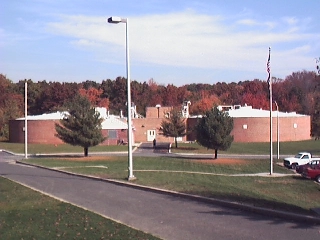|

Solids digestion is a biological
process involving the anaerobic (in the absence of air)
decomposition of organic matter contained within the sludge. It uses
several types of microorganisms to convert complex organic reactants
to products of volatile acids, methane, carbon dioxide and water and
thereby achieves waste stabilization. The process is conducted in a
series of vessels called digesters using heat and mixing to carry
out the reaction.
The Authority operates three
digesters. The first digester is used to mix the waste received from
primary clarifiers and scum pits. It discharges to the second
digester, where the wastes settles. From the second digester the
waste is sent to a holding tank digester where final settling takes
place to produce a thicker sludge. The sludge is then removed by
pumping it in a semi-liquid form to privately owned and operated
tanker cars which haul it away to other facilities. These facilities
have appropriate means for final disposal. In the course of one year
approximately 2 million gallons of sludge is removed from the
system.
|

